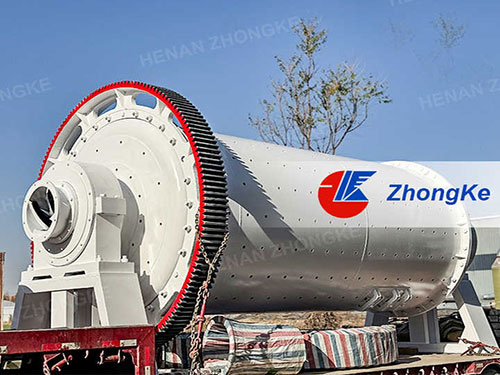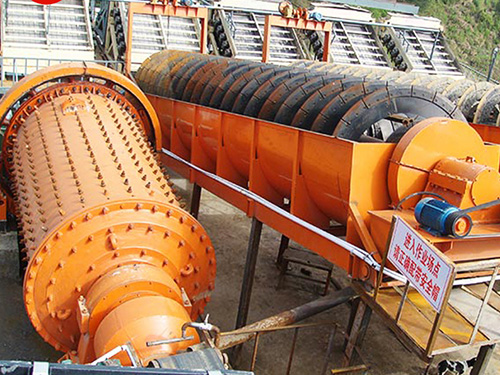
In the mining and mineral processing industry, ball mills play a crucial role in reducing ore particles to fine powders. These robust grinding machines have been a cornerstone of mineral processing for over a century, offering reliable performance in size reduction operations. But how exactly does a ball mill machine transform coarse materials into the fine powder needed for subsequent processing stages?
The grinding process in a ball grinding mill involves both impact and attrition forces working in combination to break down materials. This article will explore the working principles, components, and operational factors that enable ball mills to efficiently produce fine powders for various industrial applications.
The Working Principle of Ball Mills
At its core, a ball mill operation follows a relatively simple principle. The machine consists of a rotating hollow cylinder partially filled with grinding media - typically steel or ceramic balls. As the cylinder rotates, the balls are lifted up on the rising side of the shell and then cascade down (or drop down onto the ore), crushing and grinding the material placed inside.
The ball mill grinding process achieves particle size reduction through:
Impact: When the balls fall from near the top of the shell and hit the material
Attrition: When particles are crushed between grinding media or between media and the mill liner
Compression: When layers of material are compressed between grinding media
The combination of these forces ensures efficient size reduction, with the final product size determined by factors like grinding time, media size, and material properties.
Key Components of a Ball Mill System
Understanding the main parts of a ball mill machine helps in comprehending its grinding mechanism:
Rotating Cylinder (Shell): The primary container that holds the material and grinding media, typically lined with wear-resistant materials
Grinding Media: Steel or ceramic balls that do the actual grinding work
Drive System: Motor, gears, and pinions that rotate the mill at optimal speed
Feed and Discharge Mechanism: Controls material input and output flow
Liners: Protective inner surfaces that shield the mill shell from wear
The design and quality of these components significantly affect the ball mill performance and efficiency.
The Grinding Process Step-by-Step
Material Feeding: Raw materials enter the ball grinding mill through a feed chute, typically pre-crushed to a manageable size
Rotation Initiation: The mill cylinder begins rotating at a controlled speed (usually 65-75% of critical speed)
Media Action: As the mill rotates, grinding media are lifted and then cascade down onto the material
Particle Reduction: Repeated impacts and attrition gradually reduce particle size
Discharge: Fine powder exits through discharge grates, while oversized particles continue grinding
The ball mill operation continues until the desired fineness is achieved, which can be monitored through particle size analysis.
Factors Affecting Ball Mill Grinding Efficiency
Several parameters influence how effectively a ball mill machine produces fine powder:
Mill Speed: Optimal rotation speed ensures proper cascading of grinding media
Media Size and Composition: Larger balls are better for coarse grinding, smaller for fine powder production
Material Feed Size: Properly sized feed material improves grinding efficiency
Mill Loading: The right balance of material, media, and water (in wet grinding)
Residence Time: Longer grinding periods produce finer particles
Liner Design: Affects how media and material interact inside the mill
Understanding and optimizing these factors is crucial for maximizing ball mill performance in mineral processing applications.
Wet vs. Dry Ball Milling
Ball mills can operate in either wet or dry conditions, each with distinct advantages:
Wet Grinding:
More efficient for fine grinding operations
Reduces dust and heat generation
Allows for easier material handling and transport
Commonly used in mineral processing
Dry Grinding:
Preferred when moisture affects downstream processes
Lower maintenance requirements
Suitable for materials that react with water
The choice between wet and dry ball mill operation depends on the specific material properties and process requirements.
Applications in the Mining Industry
Ball grinding mills serve numerous critical functions in mineral processing:
Ore Preparation: Reducing mined ore to fine particles for separation processes
Flotation Feed Preparation: Creating optimal particle sizes for flotation cells
Cement Production: Grinding clinker and additives to produce cement
Chemical Processing: Size reduction of various industrial minerals
Refractory Materials: Producing fine powders for high-temperature applications
The versatility of ball mill machines makes them indispensable across multiple mining and industrial sectors.
Advances in Ball Mill Technology
Modern ball mill designs incorporate several improvements:
High-Efficiency Motors: Reduce energy consumption
Advanced Control Systems: Optimize grinding parameters in real-time
Improved Liner Materials: Extend service life and reduce maintenance
Large-Scale Mills: Increased capacity for industrial operations
Specialized Media: Ceramic and composite balls for specific applications
These technological advancements continue to enhance ball mill performance and efficiency.
Maintenance and Optimization Tips
To ensure optimal ball mill operation, consider these best practices:
Regular Inspection: Check liners, media, and mechanical components
Proper Lubrication: Maintain all moving parts according to manufacturer specs
Media Replenishment: Replace worn grinding balls to maintain efficiency
Load Monitoring: Avoid over or under-loading the mill
Vibration Analysis: Detect potential mechanical issues early
Proper maintenance significantly extends the service life of ball mill machines and maintains grinding efficiency.
The Essential Role of Ball Mills in Mineral Processing
The ball mill remains one of the most reliable and versatile tools for producing fine powders in the mining industry. By understanding the principles behind ball mill grinding, operators can optimize their processes for maximum efficiency and productivity. From ore preparation to final product refinement, these robust machines continue to play a vital role in mineral processing operations worldwide.
As technology advances, ball grinding mills are becoming even more efficient and adaptable to various materials and processing requirements. Whether operating in wet or dry conditions, at small or industrial scales, the fundamental grinding action of ball mills ensures their continued importance in mineral processing and beyond.
For mining operations looking to improve their grinding processes, investing in proper ball mill machine selection, operation, and maintenance can lead to significant improvements in product quality and operational efficiency.







